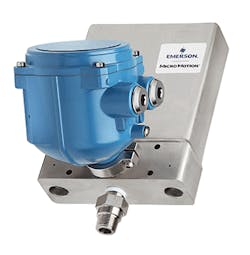Coriolis technology tackling green hydrogen extremes
While advances in battery technology have allowed significant advances in the range and performance of electric vehicles, another rapidly emerging option promises yet another step-change in decarbonized vehicle performance. Green hydrogen, which refers to hydrogen produced by the electrolysis of water using renewably sourced electrical energy, solves many of the limitations of battery-based vehicles. It offers a far higher energy density than batteries, and vehicles powered by it can already travel twice as far on a tank of hydrogen compared with their battery-powered counterparts. Plus, refilling is much faster than recharging. Quite simply, green hydrogen can decarbonize applications where renewable electrons simply can’t go. But hydrogen does bring with it some challenges—notably the very high pressures and/or low temperatures needed to contain it in a compact form. To learn more about how Coriolis meters are helping to tackle these measurement challenges, Control caught up with Genny Fultz, product manager for Emerson’s Micro Motion offering in the space.
Q: Can you speak to the challenges posed by metering green hydrogen in terms of pressures, temperatures and necessary accuracy?
Q: It’s just about two years now since Emerson introduced the Micro Motion High Pressure Coriolis (HPC015), a compact meter suitable for accurately measuring the flowrate of high-pressure hydrogen in dispensing applications. How has the uptake of that product been since then?
A: Globally, hydrogen investments are seeing considerable focus across the entire value chain, and it generated a lot of inquiries from the hydrogen production and transportation sectors. In Europe, we've seen strong growth with our HPC015 sensors in multiple regions, including the U.K., France and Germany, where the strongest push for clean hydrogen has been. Our installed meter base in the Middle East, Asia and specifically China is also seeing growth, where there's interest in using the HPC series in a master meter program. Our customer-support teams are fielding more calls about our cryogenic liquid hydrogen Micro Motion ELITE meters and our high-pressure hydrogen gas products as a result.
The HPC015 high pressure meter was designed for use in hydrogen gas dispensing applications. The XM-19 austenitic stainless-steel we use is nearly twice as strong as 316L and is resistant to hydrogen embrittlement at high pressures. Also, with a nominal flow rate that meets the SAEJ2601-1 standard of 3.6 kg/min for fill rate for both 350 and 700 bar systems, plus best-in-industry accuracy and performance during batch refueling, we're well positioned to meet the market demand.
Q: While a hydrogen leak may not represent a climate change impact, it certainly can be a safety hazard. What characteristics of Coriolis technology—and the Micro Motion High Pressure Coriolis meter specifically—help ensure safety and integrity of dispensing operations?
Q: I understand that a companion product, the HPC020 will soon be introduced to the market. A bigger model number would seem to indicate greater capabilities. Can you explain how that new meter complements and extends the features and specifications of the HPC015?
A: From what we've seen in the hydrogen dispensing market, OEMs want a complete solution in dispensing for light-duty vehicles and medium/heavy-duty vehicle refueling at the station, so that a car and a delivery truck or semi can fill up at the same station or even the same dispensing unit. Additionally, they want that filling time for each to be fast and convenient—for the long-haul truckers, as well as for the average car commuter. The HPC015 was designed to meet the SAEJ2601-1 standard of 3.6 kg/min for fill rate for both 350 and 700 bar systems. Using the same X-19 austenitic stainless-steel that's nearly twice as strong as 316L and is resistant to hydrogen embrittlement at high pressures, we designed the HPC020 to have a nominal flow rate of 9.0 kg/min to meet those larger vehicle filling needs. With this new flow sensor option launching soon, Emerson can offer a complete hydrogen dispensing flowmeter package to the industry.
Q: I’d imagine that a higher capacity Coriolis meter would also come in handy just up the supply chain, when it comes to filling the trucks that distribute hydrogen to retail terminals. Is this a target application for the HPC020?
A: Yes, there's a growing demand for truck loading and unloading of high-pressure hydrogen because in different parts of the world and in different locations, the refueling stations may or may not be located close to hydrogen production facilities. And, just as it's important to have an accurate measurement of hydrogen flowrate for individual consumer transactions, the loading and/or unloading of a truck may well represent a custody transfer point between two business entities. Micro Motion HPC meters are ideal for these applications as well.
Q: What other sorts of applications is the Micro Motion HPC series appropriate for, and can we expect to see other extensions of the line in the future?
A: The HPC015 has seen success in applications ranging from paint to fuel injection with C-22 nickel alloy wetted parts that are ideal for corrosive applications like chemical injection.
Across industry, pressures are on the rise. We’ve seen interest in the market for more high-pressure meters in all sorts of applications, particularly in carbon capture and sustainability initiatives. Clearly, the need for more material options and different line sizes is out there, and we’ll be there to meet them.



